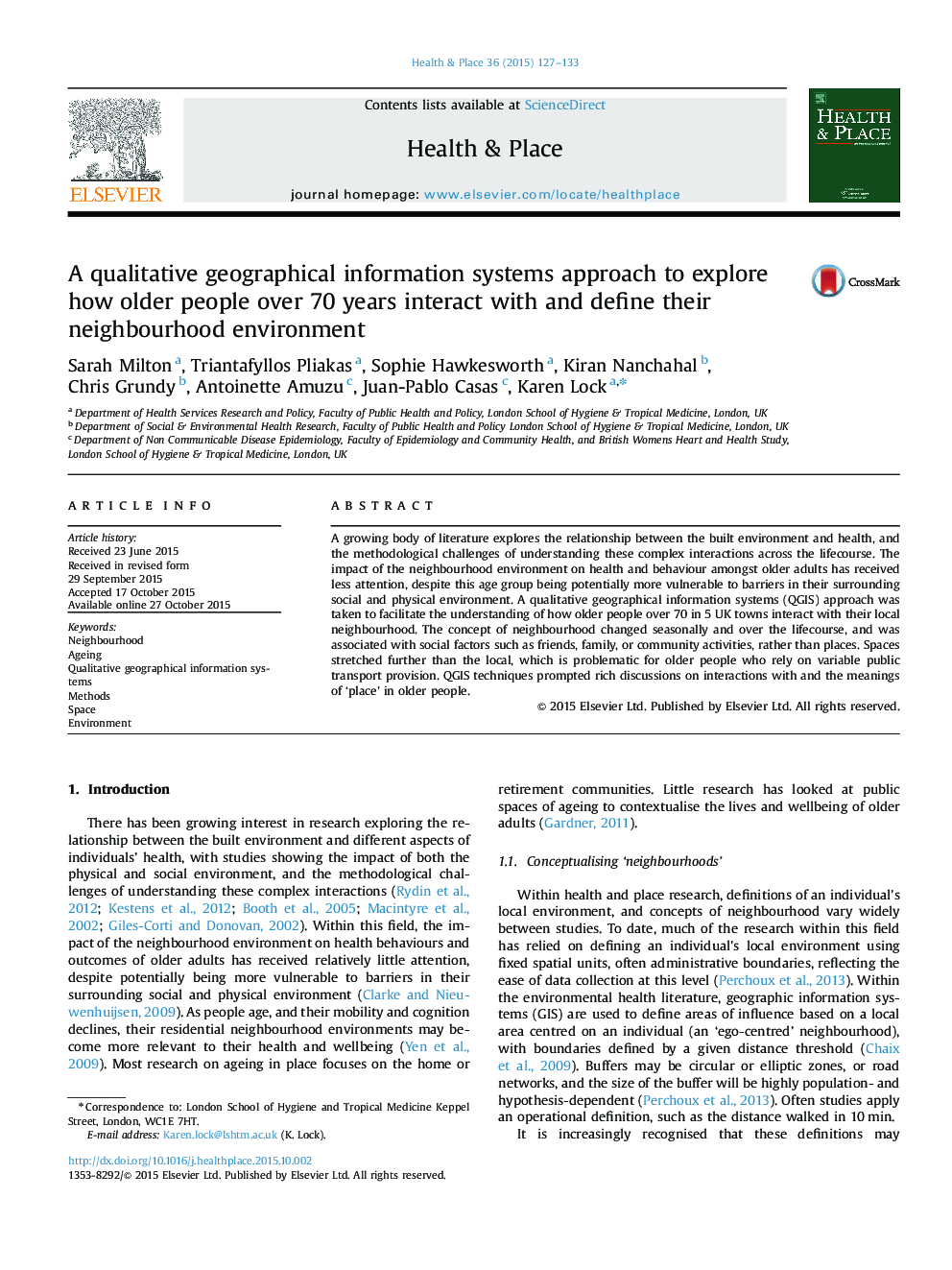| Article ID | Journal | Published Year | Pages | File Type |
|---|---|---|---|---|
| 7457709 | Health & Place | 2015 | 7 Pages |
Abstract
A growing body of literature explores the relationship between the built environment and health, and the methodological challenges of understanding these complex interactions across the lifecourse. The impact of the neighbourhood environment on health and behaviour amongst older adults has received less attention, despite this age group being potentially more vulnerable to barriers in their surrounding social and physical environment. A qualitative geographical information systems (QGIS) approach was taken to facilitate the understanding of how older people over 70 in 5 UK towns interact with their local neighbourhood. The concept of neighbourhood changed seasonally and over the lifecourse, and was associated with social factors such as friends, family, or community activities, rather than places. Spaces stretched further than the local, which is problematic for older people who rely on variable public transport provision. QGIS techniques prompted rich discussions on interactions with and the meanings of 'place' in older people.
Related Topics
Health Sciences
Medicine and Dentistry
Public Health and Health Policy
Authors
Sarah Milton, Triantafyllos Pliakas, Sophie Hawkesworth, Kiran Nanchahal, Chris Grundy, Antoinette Amuzu, Juan-Pablo Casas, Karen Lock,
